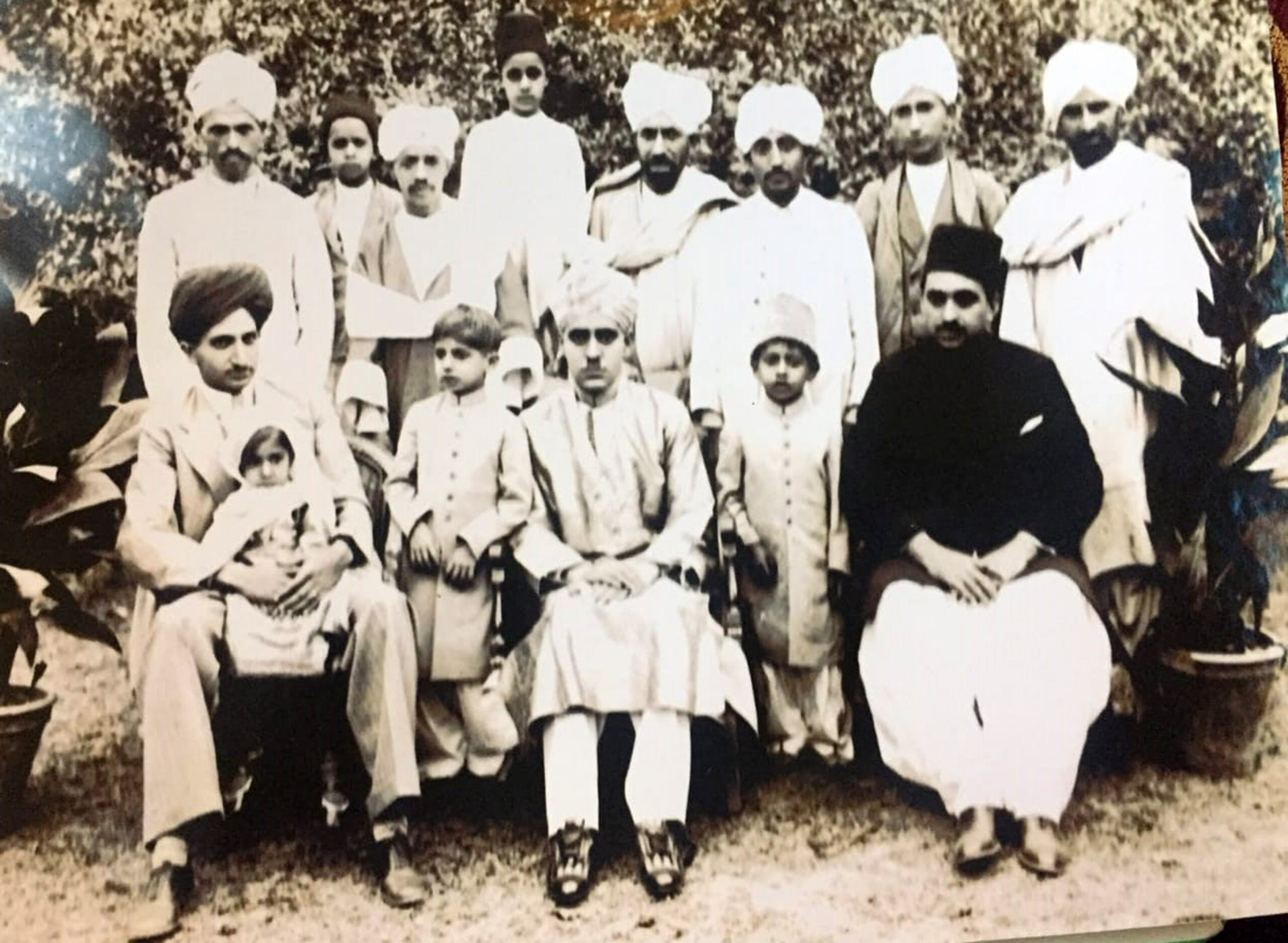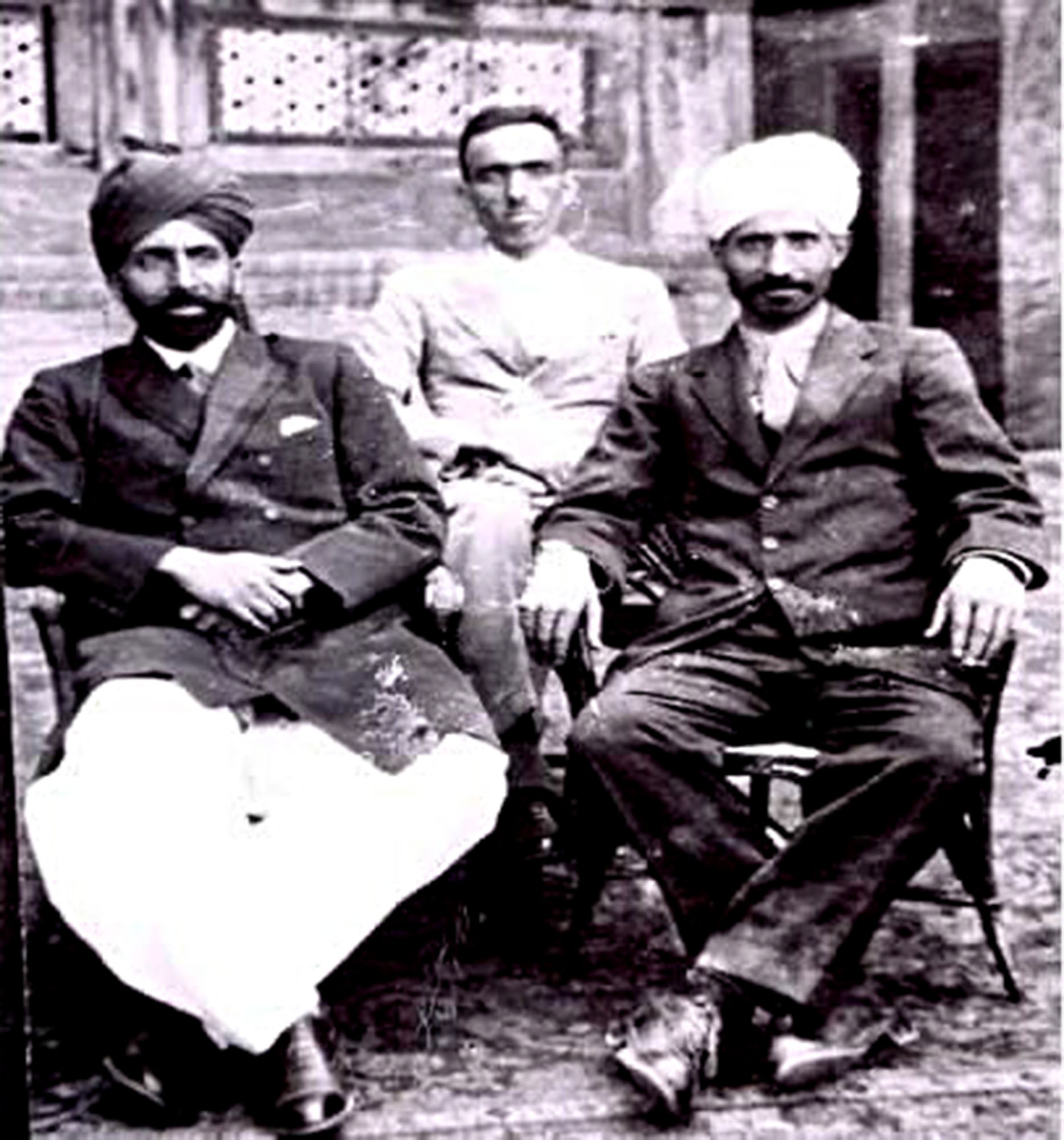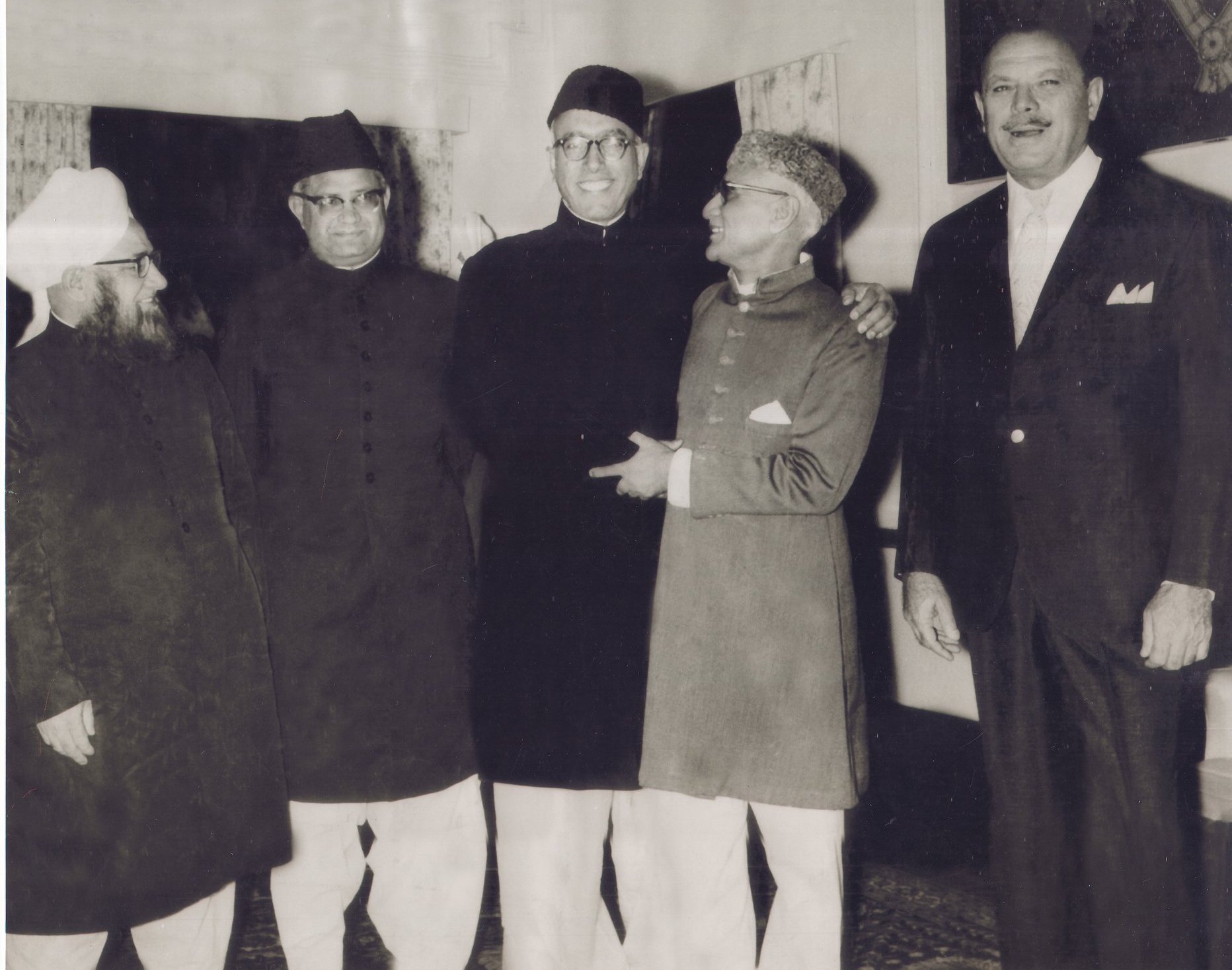[ad_1]
In Kashmir tehreek against the despotic Dogra rule, one of the major characters was businessman, Khawaja Sauddin Shawl, whose contribution is least known and hardly acknowledged. MJ Aslam offers the text and context to Shawl’s rise, contributions and eventual silence

Khawaja Sanaullah Shawl was the most prominent merchant of nineteenth-century Kashmir. He had three sons, Ghulam Hassan, Noor ud Din and Saududdin. Among the three, Khawaja Saududdin Shawl, born at Mohalla Mir e Masjid (Khanyar) in 1873 AD, rose to prominence during the second quarter of the twentieth century. His contributions to the politics of Kashmir are least known and hardly acknowledged. He was the pioneer of Kashmir’s movement against despotic Dogra rule.
Shawl had a dream of seeing his people living with dignity and honour, free of intimation and fear, in a decolonised democratic world that the subcontinent was gradually shaping to be after a few decades. He was the leading political figure during the initial political awakenings among Kashmiri Muslims.

Shawls were an influential family. Living at Mir Masjid, they had a huge garden that locals called Shawl-e-Bagh. It was a miniature Badamwari.
They had a beautiful Dewankhana, where guests, local and non-local, would come, sit and discuss matters of general interest for hours together. It was open to State officers, leaders, clergy, foreign tourists and traders also. It played host to several political meetings of “budding” Muslim leaders as well.
Businessman Sanaullah was a generous giver, according to Mohammad Yousuf Shawl, grandson of Saududdin Shawl, who inherited this quality. “My grandfather Khawja Saududdin Shawl with his domestic help, Qadir Kak, would remain busy round the year in distributing ration items like rice, salt, sugar, tea, charcoal, and clothes among the needy visitors to Shawl Family,” he said. A leading philanthropist, he is credited for the renovations and refurbishment of some of Kashmir’s major shrines and some masjids.
One historical masjid, known as Thong e Masjid at Thong e Mohalla, Victory Crossing near Hotel Burj, Khanyar, Srinagar was built under the benefaction of Aqil Mir, a God-fearing Muslim and Commandant of ration supplies, Darogha i Rasd, of Kashmir during Shah Jahan’s reign (1628-1658). The masjid fell in ruins in the nineteenth century pushing Shawl to rebuild it. By 1869, he had added a grand Hammam and a Khanqah to it. “My grandfather donated 14 kanals of ancestral vegetable-growing land to Thong e Masjid for its maintenance,” Mohammad Yousuf said. “The land is to date used by the masjid for its maintenance.”
Worth mentioning here, Aqil Mir built another mosque that retained his name. It is still known as Masjid e Aqilmir and the Mohalla is also Aqilmir.
Saududdin was born at a time when modern education barely existed in Kashmir. He received his initial education in traditional Maktab schools. To enable him to learn Urdu, Persian and Arabic, the family sources said they had hired a teacher, Behram Ji, who was a resident of Bombay. He gave him private tuition in the English language also.
The Year of Turmoil
For the first time in his life, Shawl rose to prominence during the consequential developments of 1924. The Muslim “labourers” of Silk Factory Solina Srinagar had long pending grievances against the Dogra administration. On March 20, 1920, they formally demanded the removal of some communal and corrupt Pandit officers from the factory. Besides, they demanded an increase in their wages. As the administration avoided looking into the labourer’s petition, the workers suspended their work in the factory in July 1924.
The British Resident also threw his weight behind the worker’s demand that some Muslim employees be elevated to the posts of responsibility but it did not help. Instead, the District Magistrate misrepresented the facts to the higher authorities at Gupkar, which worsened the situation. Some of the protesting labourers were arrested and put behind bars at Shergadi Police Station, Srinagar. When people assembled outside the police station on July 20, 1924, demanding the release of the arrested employees, the Dogra cavalry, that was deployed there at the gates, opened fire killing ten civilians and labourers on spot, leaving many injured as many others were rounded up. In a quick follow-up, the entire city was handed over to the military.
It was a year of turmoil. The same year, Tazia procession was denied in the city by the administration which caused deep anger among the Muslims. Lahore newspaper Akhbar i Aam published an article that angered Kashmiri Pandits. They took out a procession at Khanqahi Moula Srinagar and entered the shrine sanctorium without removing their shoes. It was bitterly resented by Muslims.

Viceroy’s Visit
In the aftermath of these developments and the subsequent strong-arm tactics of the administration, various Muslim organisations sent a number of telegrams to Lord Reading, the Viceroy of India. On July 22, 1924, a fact-based letter was sent drawing his attention towards the pitiable plight of the Muslim subjects. There was a response. Lord Reading visited Kashmir between October 14 and October 28.
The Viceroy was taken in a river boat procession by the Dogra administration but the “Muslim crowds exhibited black flags bearing inscriptions such as “our mosques desecrated” and “how long will Muslims be trodden down by Hindus in this country”. A memorandum was drafted and signed at the residence of Khanyar’s Abdul Aziz Zaildar by prominent Muslim leaders.
Agha Haidar, an advocate from Lucknow who later became a judge of the Lahore High Court, who was staying in a houseboat at Nigeen, was helpful in shaping the final draft of the memorandum. It was how Khawja Saududdin Shawl came in contact with Agha Haidar.
History has recorded that Shawl was the main person behind bringing together all prominent Muslims, including Khawaja Hassan Shah Naqashbandi, Mirwaizi Kashmir Molvi Ahmedullah of Jamia Masjid, Molvi Hamdani, Agha Syed Hussain Shah Jalali, Mufti Sharief ud Din, Molvi Attiqullah and Haji Jaffar Khan, for a common cause of Muslims. The unanimous decision was to highlight and submit a formal memorandum to the Viceroy of India, the Paramount Guest. As the government disallowed Muslim leaders from meeting with Viceroy, Shawl took the memorandum and presented it to him when he visited a local handicraft shop. This was the act that made Shawl the “father of the modern political movement of Kashmir”.
The memorandum flagged demands including a due share in jobs to be given to Muslims and proprietary rights of the peasants in the land to be recognised. The memorandum did not get fetch anything to the majority but it gave a fillip to their demands and grievances first time “in an organised manner”. Some of the prominent originators of the memorandum met with punishment by the Dogra monarch. A Muslim Tehsildar, Noor Shah Naqshbandi, was dismissed from service; Khawaja Hassan Shah Naqashbandi’s Jagir which fetched him Rs 4000 annually was confiscated; Syed Hussain Shah Jalali was dismissed from the office of Zaildar and Mirwaizi Kashmir Molvi Ahmedullah of Jamia Masjid and Molvi Hamdani of Khaqah i Moula Srinagar were let off with a stern warning. Many demonstrators were summarily dealt with and punished.
Shawl Banished
On March 15, 1925, the house of Khawaja Saaduddin Shawl was surrounded by a contingent of 150 constables, one inspector and two sub-inspectors. He was shown an order of banishment from the State and taken in a police lorry to Kohala where he was dropped in British Punjab territory.
Khawaja’s expulsion caused considerable reaction and resentment among the Muslims. The Youngmen Muslim Association of Jammu in their meetings on March 7-9, 1925, condemned the action. These meetings were attended by Hasan Nizami of Delhi, Azmatullah of Lahore, and Molvi Mohammad Abdullah of Lahore.
On March 16, Mirwaiz e Kashmir, Molvi Ahmadullah of Jamia Masjid in a powerful and emotional speech highlighted that the people must be alive to the treatment that the State meted out to the Muslim subjects. It made the whole gathering burst into wails loudly. The atmosphere was filled with gloom of shrieks and sighs. Kashmir Muslim Conference, Akhbar i Kashmir Lahore and Anjuman i Kashmiri Musalman, Gujranwala, condemned the State action against the signatories to the memorandum.

In exile, Shawl stayed at the residence of Mian Nizamuddin of Lahore who was known as Rais e Azam of the walled city. Shawls had friendly and business ties with the Mian family of Lahore. The two families used to visit each other whenever time permitted. Shawl also stayed for some time with some Sethi family of Peshawar. Dr Sir Mohammad Iqbal, an eminent poet, theologian and thinker, often used to come to the house of Mian Nizamuddin where he also met Shawl.
One day, in a gathering of literary persons at Mian Nizamuddin’s residence, Iqbal was impressed with Shawl’s understanding of Shikwa and Jawab e Shikwa, two master poems of Iqbal. Shawl remained a great Iqbal follower. His banishment boomeranged as Shawl developed a close association with several prominent organisations of United Punjab and at a number of meetings the State action was condemned.
Following the Raj Tilak of Maharaja Hari Singh in February 1926, the ban on Shawl was lifted. However, Shawl did not give up his desperation to get some justice for his people.
Reading Room Party
By 1930, a group of young Muslim students after completing their academic courses at Aligarh and Punjab Universities floated a Muslim Reading Room Party at Fateh Kadal, Srinagar to discuss the issues pertaining to Muslims. These young men included Sheikh Mohammad Abdullah also. This Party held public meetings. It coincided with Unjuman-e-Nusratul Islam Rajouri Kadal Srinagar, Khanqashis of Khanqah-e-Moala, Srinagar and even Ahmadiyas organising themselves for pressing forth the demands of the majority community before the Maharaja who had asked them for nominating their representatives.
On June 21, 1931, Ghulam Ahmad Ashai announced the names of seven Muslim representatives who were tasked to bring the grievances of the Muslim community before the Maharaja. They included Molvi Mohammad Yousuf Shah, Molvi Mohammad Hamdani, Sheikh Mohammad Abdullah, Ghulam Ahmad Ashai, Syed Hassan Shah Jalali, Munshi Shahabuddin and Khawja Sauduuddin Shawl.
Historian Bazaz terms the meeting “the most important meeting in the history of the movement” which had brought two Mirwaizs together and all Muslims across sectarian barriers, “had joined hands and the whole community was unanimous in its demands”. Shias and Sunni Muslims had after four hundred years of bloody sectarian feuds first time mended the fences with each other for a common cause.
New Leadership
The senior Muslim representatives did their best to build the community’s young leaders. “Mirwaiz had introduced me to the audience at Jamia Masjid as “my leader”. He asked them to deem anything I said as his own utterance,” Sheikh Abdullah later wrote of these days.
This “opportunity” was “grabbed” by Sheikh “with both hands”, as Saraf and Gulzar wrote. Such a broad declaration and opportunity given by Mirwaiz, to “a simple man” (according to Taffazul Hussain, Sheikh’s biographer) and “an honest man of simple thinking” (as Saraf wrote) evinces the trust Mirwaiz and other leaders had reposed in young Sheikh, the leader of the new generation.
In his memoir, Choudhary Ghulam Abbas writes that the Mirwaiz family of Rajouri Kadal Srinagar was the most influential family of religious preachers of Kashmir and that Molvi Mohammad Yousuf Shah’s introduction of Sheikh Abdullah to the public helped him build his stature considerably. Saraf writes that some elders, Saaduddin Shawl, Molvi Mohammad Abdullah and Munshi Shabuddin, during the 1931 political awakening of Kashmiri Muslims, helped Sheikh build his image among the masses.
Key Hub
Shawl’s residence became the hub of political activities before and after July 13, 1931, the Martyrs Day, when 22 Muslim civilians were massacred outside Central Jail, Srinagar. Personally, Shawl remained actively involved with political developments and was part of the deputations that called on the Maharaja after July 1931 seeking his intervention and redressal to the long pending grievances of Muslim subjects.
In September 1934, Shawl joined the Azad Muslim Conference of Mirwaiz Molvi Mohammad Yousuf Shah, which is clearly borne out by the fact that he was fielded as a candidate for Amira Kadal Constituency by the party in the first electoral process of the State, for Praja Sabha, against G M Sadiq. He lost to Sadiq of the Muslim Conference. A staunch communist, Sadiq had based himself on the popular political movement.
Mirwaiz Ally?
A question arises – why Shawl separated himself from the mainstream Muslim Conference? No exact answer is known. “It seems from circumstantial evidence that the gradual independent working of Sheikh Mohammad Abdullah was not to his liking,” writes Saraf. “It also seems that he was psychologically more inclined towards Mir Waiz.”

Subsequent developments might have vindicated Shawl in making a decision early.
On the flip side of it, it needs a mention that Shawl was closely related to the Mirwaizs. A prominent religious preacher and political activist of the 1930s, Molvi Nooruddin of the Mirwaiz Party was the son-in-law (damad) of Shawl. Interestingly Mirwaiz Molvi Mohammad Yousuf Shah was the brother-in-law (Behnoyi) of Nooruddin.
Besides, Shawls have close familial relations with Mirwaiz Molvi Mohammad Farooq too.
For most of his life, Shawl remained away from the so-called “nationalists”, “neo-merchants” and “educated-elite” of that era.
The Demise
Khawaja Saaduddin Shawl passed away on October 25, 1955 (10 Rabi-ul-Awal, 1375 AH) at the age of 82. He was laid to rest in his ancestral graveyard adjoining Thong e Masjid. He was the first among the dead of the Shawl family who was buried in the ancestral graveyard that was carved out of a large land property by Sanaullah Shawl personally.
On the gravestone of Saududdin Shawl, the words “Bani Tahreeki Azadi Kashmir” were inscribed. These four words have interesting detail.
It was Ghulam Jeelani Shawl, son of Khawaja Saaduddin Shawl, who, in a condolence gathering at their Khanyar residence publicly announced that he had received a message from Sheikh Mohammad Abdullah from jail suggesting that on the tombstone of the deceased the words “Bani Tahreeki Azadi Kashmir” should be inscribed.
Shawl was survived by two sons, Ghulam Jeelani Shawl (died in 1982] and Innayatullah Shawl [1988] and five daughters.
[ad_2]
#Khawaja #Saududdin #Shawl
( With inputs from : kashmirlife.net )

Leave a Reply